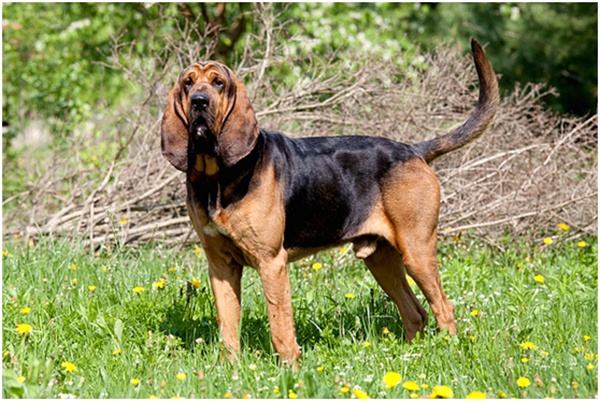Bloodhound
IUCN
LCBasic Information
Scientific classification
- name:Bloodhound
- Scientific Name:Canis lupus familiaris,St. Hubert's Hound
- Outline:Carnivora
- Family:Canidae
Vital signs
- length:58-69 cm
- Weight:36-50 kg
- lifetime:10-12 year
Feature
Bloodhounds were originally bred for hunting deer and wild boars, and have been used since the Middle Ages as police dogs to track criminals or search for missing persons. Most are now used exclusively for tracking. The Bloodhound is a descendant of the hounds bred by St. Hubert in Belgium.
Distribution and Habitat
Originally from Belgium
Appearance
The head of the Bloodhound is narrow when viewed from the front, broad when viewed from the side, with a short muzzle, flat on both sides of the head, and of approximately equal width throughout the head. The brow ridges are not very prominent, but are rather pronounced because of the deep set eyes. The eyes are deeply set in their sockets, with lids that are lozenge or diamond-shaped, with the result that the lower lid is turned outward and hangs down like the upper lip. The color of the eyes conforms to the general hue, from darker dark brown to yellow; but dark brown (hazel) is certainly preferred, although this color is rare in liver and brown dogs. The ears are thin and soft to the touch, extremely long, set very low, and hanging with graceful folds, the lower part curling inward and backward. There is excess skin on the head, which appears to be redundant almost everywhere, but is more obvious when the head is lowered; this excess skin hangs down and forms wrinkles, especially on
Details
The Bloodhound, also known as Canis lupus familiaris, is one of the oldest, purest, and largest scent hounds in the world. Its origin can be traced back to 1000 AD. In the 8th century, monks in Belgian monasteries raised a dog called St Huberts, the predecessor of the Bloodhound. The monks only perfected this scent hound through targeted breeding, rather than creating it, which means that the Bloodhound is a natural breed, not a breed bred by humans.

In the eighth century, it was bred as a hunting dog in Belgium and became known as the Saint Hughes. The Saint Hughes was favored by the French royal family and brought to England by King William in 1066. After several centuries, the British improved the breed to produce today's bloodhound. In 1871, the bloodhound made its debut at the British dog show. In 1885, the Bloodhound was certified by the American Kennel Club (AKC). It has an indomitable and magical ability to track smells. It has been proven that it can track smells that are more than 14 days old. It has also set a record of tracking smells for 220 kilometers. The evidence it found has been used as evidence in court. In Belgium, St. Hubert hounds are used to track wolves or deer, and they can also track injured prey.
Bloodhounds are very gentlemanly and patient, and they are also very friendly to children and other small animals. Bloodhounds will let children lie/ride on it, no matter how the children Rua it, it will accept it all-but this is not good, because sometimes children may accidentally hurt the dog. Carrying a baby on your back puts a lot of pressure on the dog's spine, which poses a safety hazard. In addition, good temper also depends on the situation-please remember that bloodhounds have the habit of protecting food, so no one should easily compete for its food or toys. Some bloodhounds are timid, shy or alert. They are loyal to their owners and family members, but may sometimes be aggressive towards dogs of the same sex.
Although bloodhounds are large in size, they are lively and active, and play like children. If you can take it outdoors often, it will be very happy.
Protect wild animals and eliminate game.
Maintaining ecological balance is everyone's responsibility!








